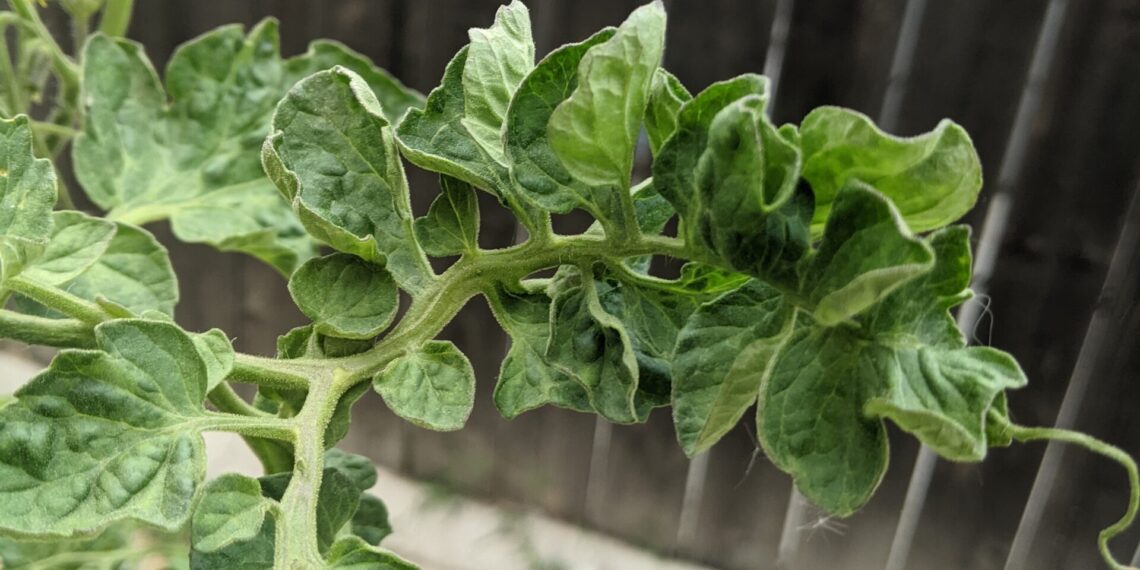
Tomato Update – My Plants are Dying!
A few weeks ago I shared with you how I ended up with eight different tomato plants, despite not liking tomatoes at all. I had decided at the beginning of the growing season to share more of my garden and what I’m doing and learning, so I had decided to write that post probably a couple months ago. Thanks to life and a bad case of procrastination, that post didn’t make it up when I wanted it to and sadly by the time I did publish that post I was already starting to run into problems, but I had not figured out what was causing the problem and I was optimistic things would work out.
Fast forward to today and, well, things aren’t looking too great. Actually things are looking pretty terrible.
Besides one of our Cherokee Chocolate tomatoes and maybe our Lemon Boy (although every day they start looking worse and worse), all of our tomato plants are struggling and deformed. Each plant varies in how severe the problem is, but deformed leaves, curling leaves, curling branches, legginess, stringy leaves, these plants just don’t look good. In fact as the days go on we are slowly losing all of our tomato plants.
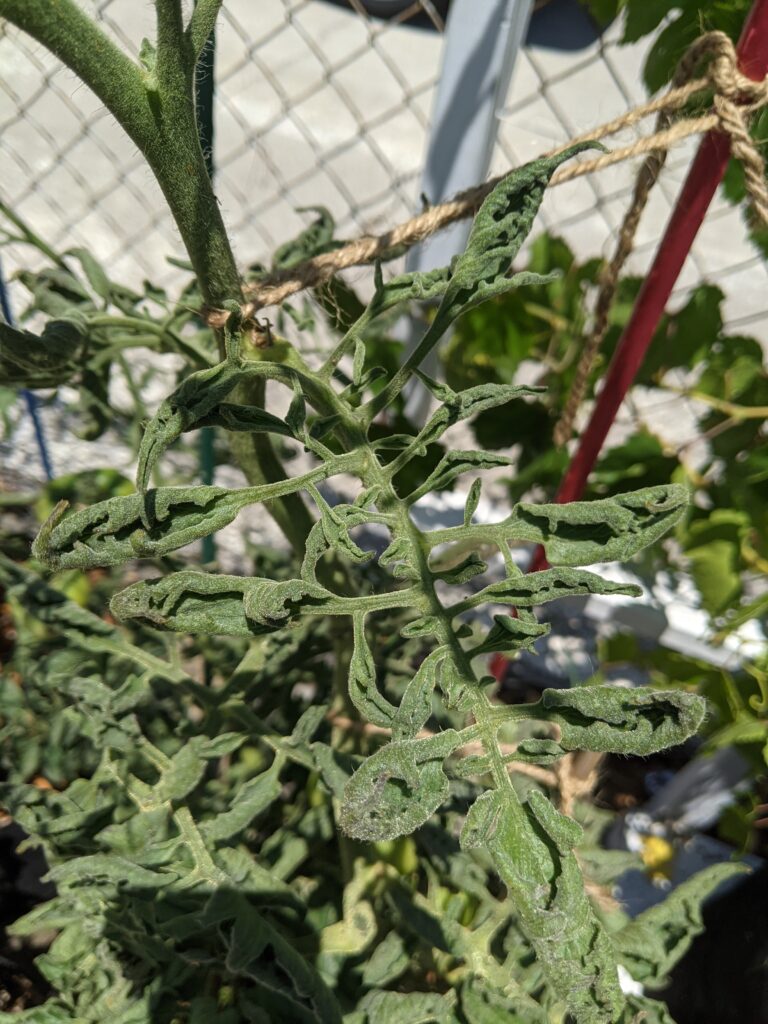
Strange growth and deformed leaves on one of our plants. 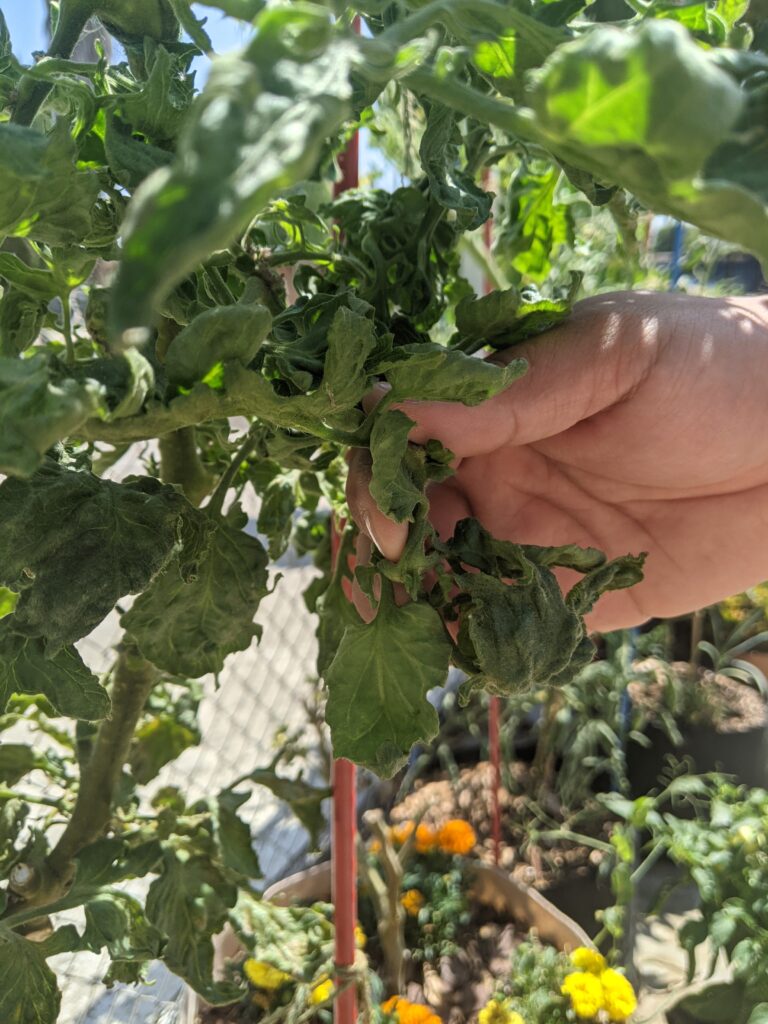
Twisted tomato branch on Mr. Stripey 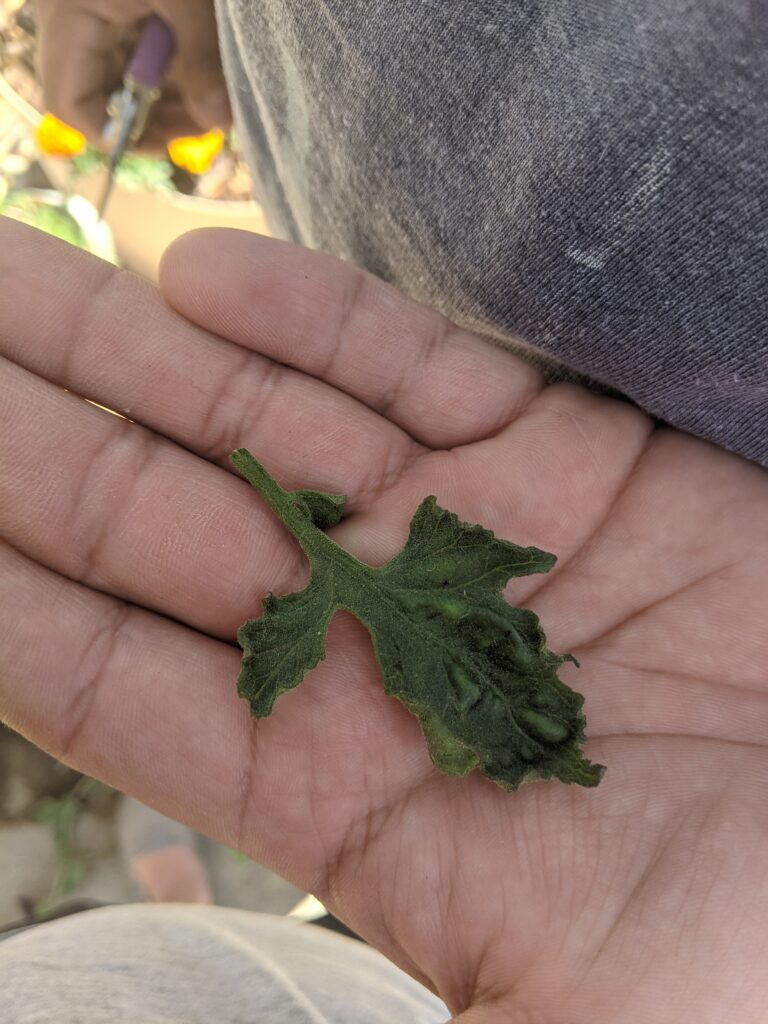
Deformed leaf
First we had to say goodbye to Mr. Stripey. His leaves and branches were curling so tightly there was no air circulation and it barely even looked like a tomato plant. Then we pulled our Hawaiian pineapple. It was a mess, a mixture of curling leaves, twisted branches and stringy growth. Then this past weekend we said goodbye to one of our Cherokee chocolates and Old German. And we topped our malachite box in hopes that maybe if we stopped it from getting any bigger it could focus it’s energy on the few fruit it had produced. Although it has produced a few fruits, it has grown really tall with very few branches and super skinny leaves.
So what’s the problem?
We’ll we still aren’t 100% sure yet, but after stumbling across this YouTube video one Saturday afternoon while trying to figure out what sort of nutrient deficiency we had (that was our first guess), we have a few guesses.
I don’t remember exactly how we got here, to this video, but it was the first time we saw leaves that really resembled the problems we were having. This seemed like we had found the culprit.
After doing several hours of research we were pretty sure this is what we were dealing with. Herbicide drift. Herbicide damage on plants can vary greatly, but some of the most common signs or side effects are “: it may reduce non-target plant vigor, create extreme deformities in stem and leaves, increase susceptibility to disease, and shorten the life cycle of a plant.” And a Google image search of herbicide damage on tomatoes brought up photo after photo of plants that looked like ours.
But how would our plants have come in contact with herbicide?

We, as much as we can, use organic and natural practices in our garden. We don’t spray herbicide or pest control poisons. We don’t use synthetic fertilizers and we always look for natural remedies when it comes to any garden problem. After racking our brains for a few days, however, it hit us, that right around the time this problem started our neighbors listed their house and in preparation for staging the home for their open house, they did a through over haul and cleaning of the entire property, inside and out. They were spraying down gutters, pressure washing the walls, and they did have a decent weed problem that ran along the wall between our homes. Now we aren’t 100% certain they sprayed herbicide, but it’s highly likely. Making things worse, if they did spray anything, most of our plants rest along our house on the wall that faces their property.
So we had a possible answer for why our plants were sick, the damage matched and we had an explanation for the exposure. This is what we were leaning on and still somewhat think might be the culprit, but one thing still didn’t completely match.
Our tomatoes were the only plants effected. In my research I found out that other plants, besides tomatoes are very susceptible to herbicide damage. Some sensitive plants include grapes and watermelons, both of which I am growing. I also think I read somewhere that sunflowers and roses may be sensitive to herbicide, although I can’t find that source again so don’t take my word on that one, but again, my entire front yard is nothing but sunflowers and roses and they are all fine.
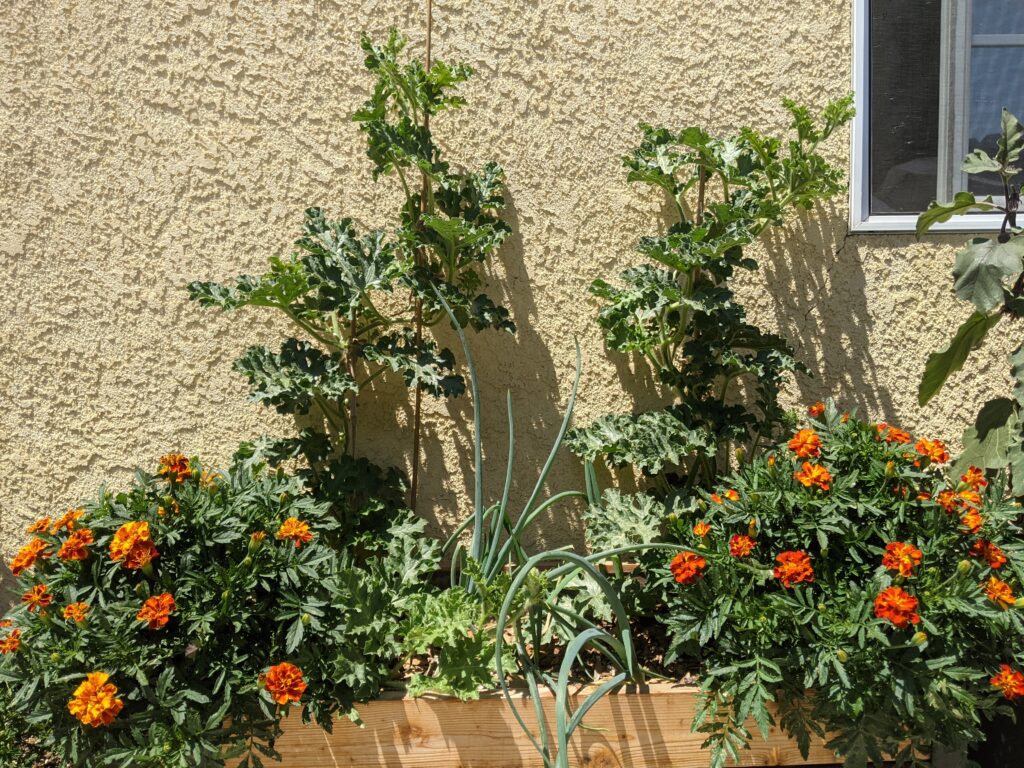
Our healthy watermelons 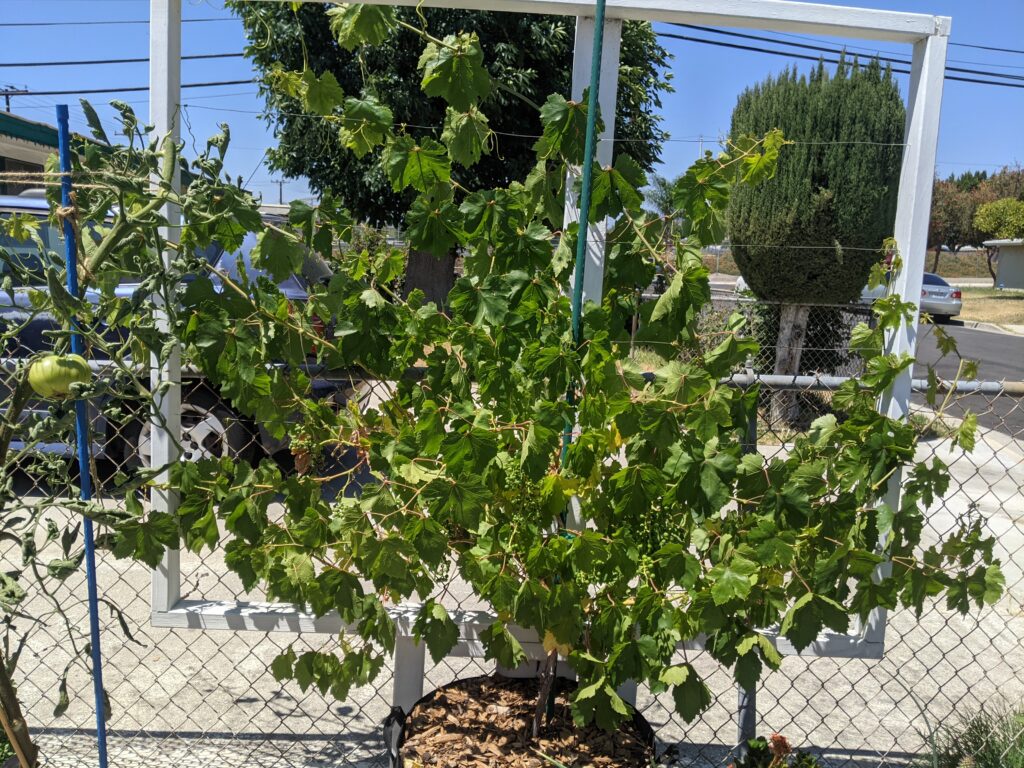
Our healthy grape vine
We wanted to believe we had found our culprit, what was making our tomatoes sick, but as we did more research we stumbled across another very likely one, tomato mosaic virus. The tomato mosaic virus is a virus, often misdiagnosed as herbicide damage that causes growth and fruit deformities. It is usually spread by pests, but can also live in soil and is easily passed from one plant to another through open wounds on the plant.
Here is a brief overview of the disease.
The disease is usually spread by pests through open wounds or by using tools, such as clippers, snipping an infected plant and then clipping another plant, cross contaminating. Now, we are very good about cleaning our tools between plants, but in doing our research we discovered you can even pass the virus by touch. Meaning if we touch one plant that is infected and then touch another plant, on an opening, it can be spread that way.
Right before all these problems started, we pruned and transplanted all or our tomatoes to their larger final pots. (One of our original theories on what was wrong was also, shock or stress from the transplant.) We cleaned our clippers between plants, but we didn’t wash our hands. (Writing this, it feels like such a rookie mistake, which I am so I guess it’s ok.) If one of the plants was already infected with this disease we would have easily passed it to all the others.
So that is where our tomatoes are at, herbicide drift, tomato mosaic virus and/or some other mystery. Gardeners seem to be split on the topic, but some do say that a plant, if strong enough can out grow the herbicide damage, if it wasn’t too severe. On the other hand, tomato mosaic virus is super contagious and pretty much a lost cause, they say destroy the plant. Because we thought it was herbicide damage first, we had been holding out, hoping the plants might rebound and only destroying ones when it became clear they were a lost cause.

Deformed and twisted leaves on one of our plants 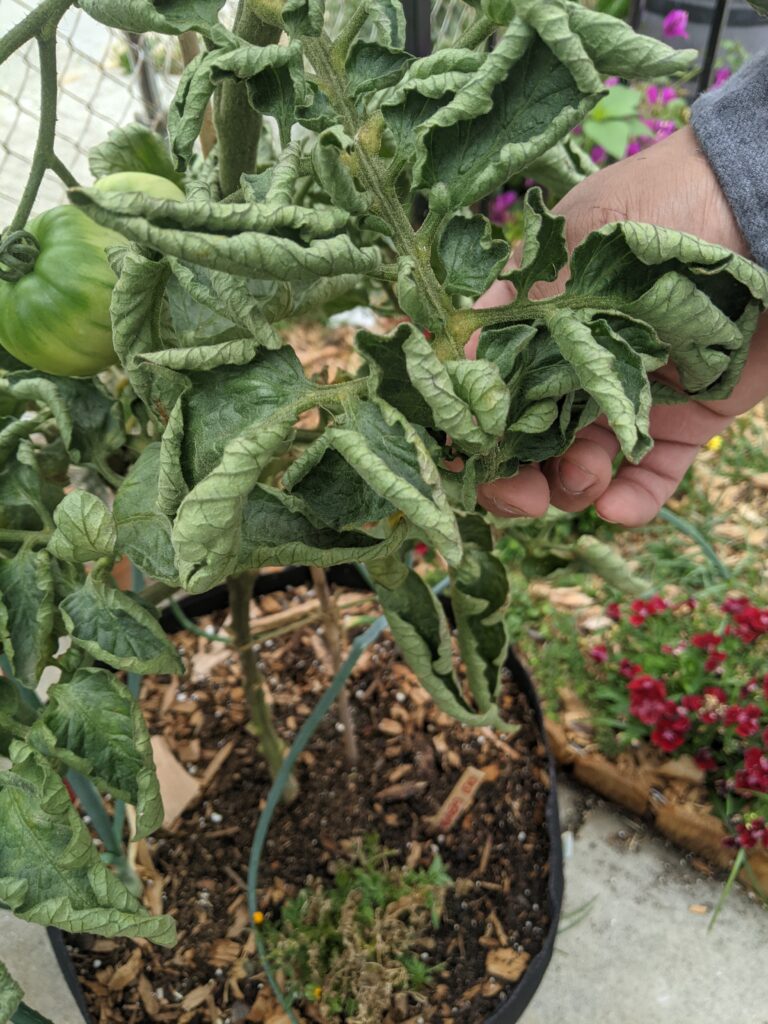
Twisted branches and curled leaves 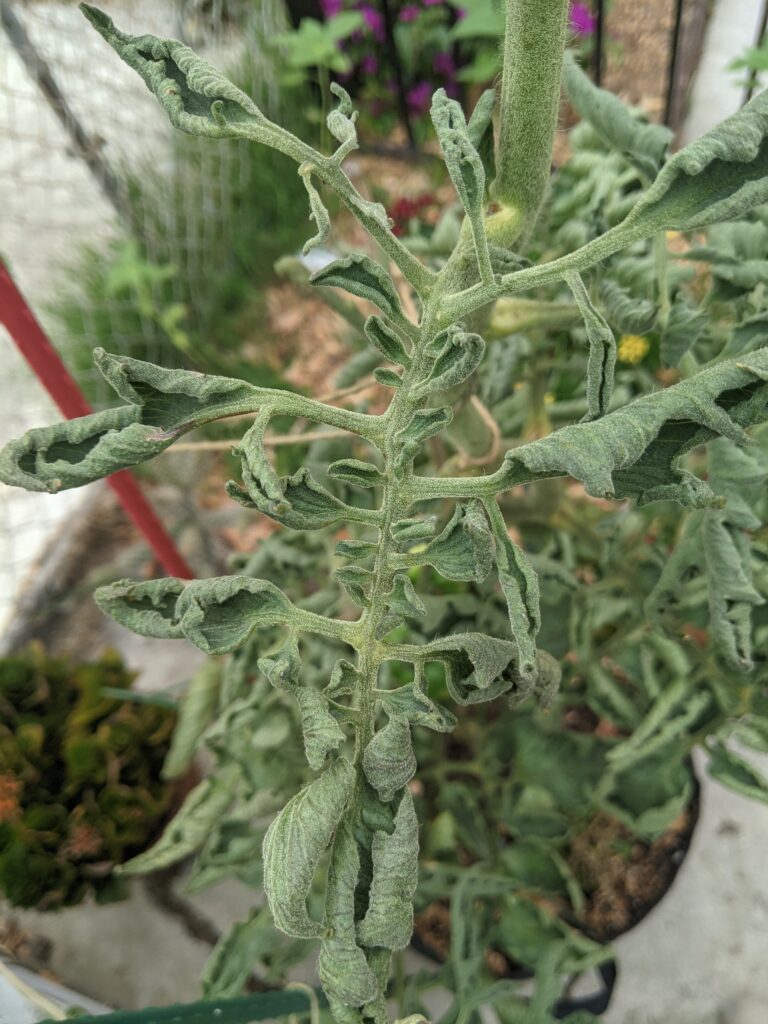
Strange and deformed tomato leaf growth 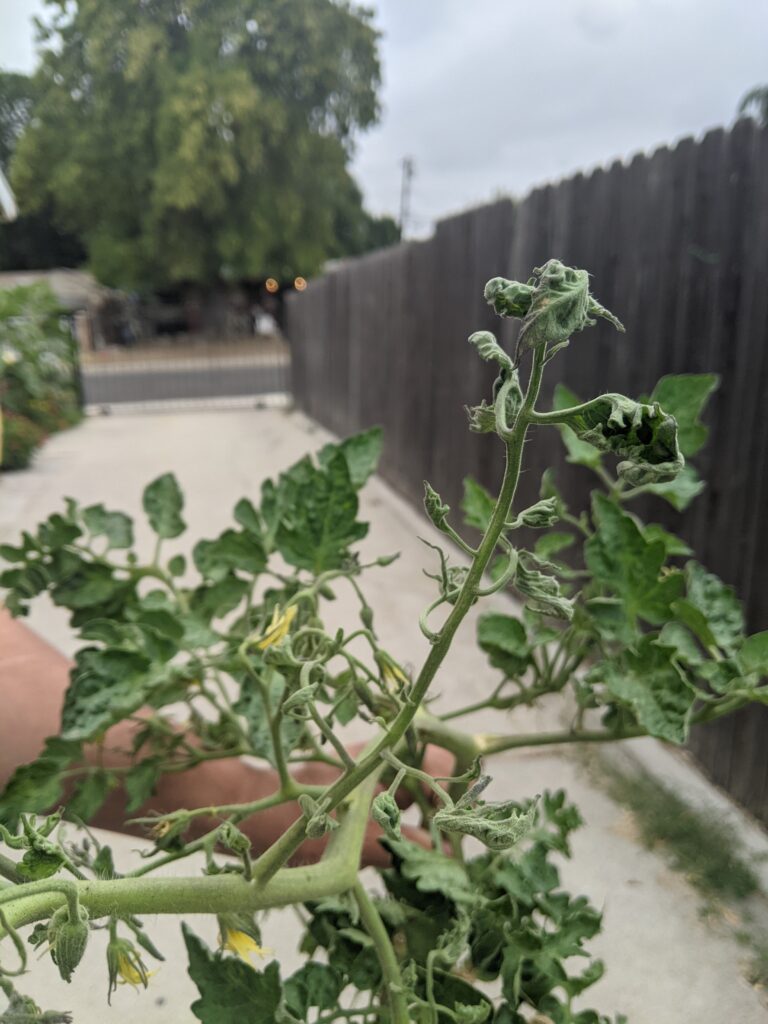
Skinny, string like leaves on one of our plants
Now that we suspect it may be tomato mosaic, we are contemplating getting rid of them and just starting over, just to be safe.
I’ll keep you posted as we move forward.
Also, before all these problems really set in, we had to say goodbye to our old cherry tomato from last year. We don’t think that one got sick, we just think it reached the end of it’s productive life.




